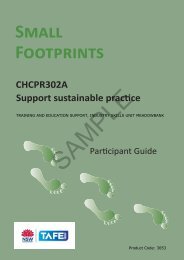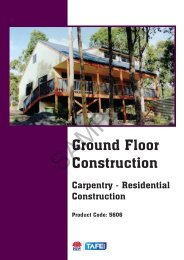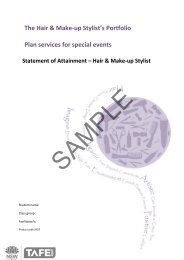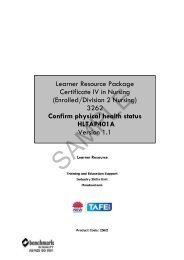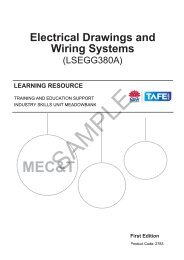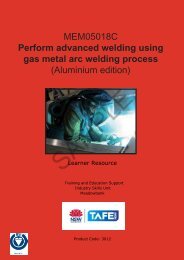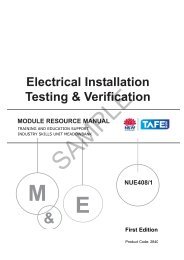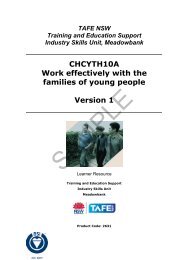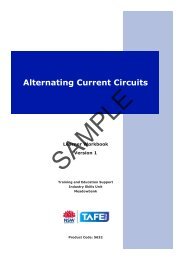TAFE-Door-and-Window-Fixing-5716 Promo.pdf - vetres
TAFE-Door-and-Window-Fixing-5716 Promo.pdf - vetres
TAFE-Door-and-Window-Fixing-5716 Promo.pdf - vetres
You also want an ePaper? Increase the reach of your titles
YUMPU automatically turns print PDFs into web optimized ePapers that Google loves.
DOOR AND WINDOW FIXINGTIMBER DOOR-FRAME ASSEMBLYJOINTSThe four acceptable methods of joint construction between solid head <strong>and</strong> jamb stiles are:1. Trenched head <strong>and</strong> fully let-in jamb (through housing)2. Trenched head <strong>and</strong> bare-faced tenon (shouldered housing)3. Partly trenched head <strong>and</strong> stepped jamb (stopped housing)4. Morticed head <strong>and</strong> tenon on jamb (shouldered mortice <strong>and</strong> tenon).The most commonly used are the Trenched head <strong>and</strong> fully let-in jamb <strong>and</strong> the Partlytrenched head <strong>and</strong> stepped jamb. To create an accurate tight-fitting joint, use a short offcutsection of jamb stock material, when setting out the head to take the stiles. The Partlytrenched or stopped housing method is used on stained or clear finished work where thearchitraves do not cover the joint.ThroughhousingStilesHeadSAMPLEStoppedhousingStile8© <strong>TAFE</strong> NSW Training <strong>and</strong> Education Support, Industry Skills Unit Orange <strong>and</strong> Granville



